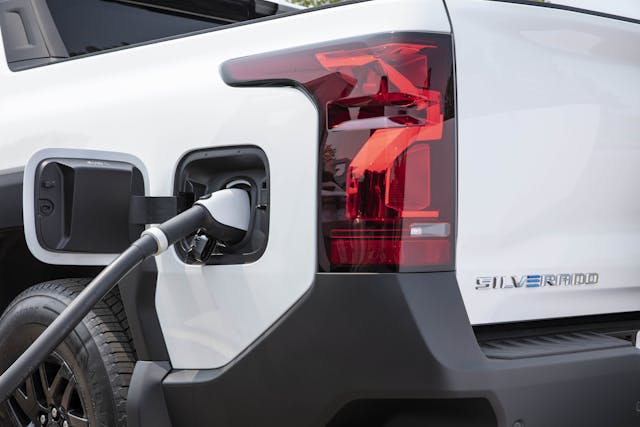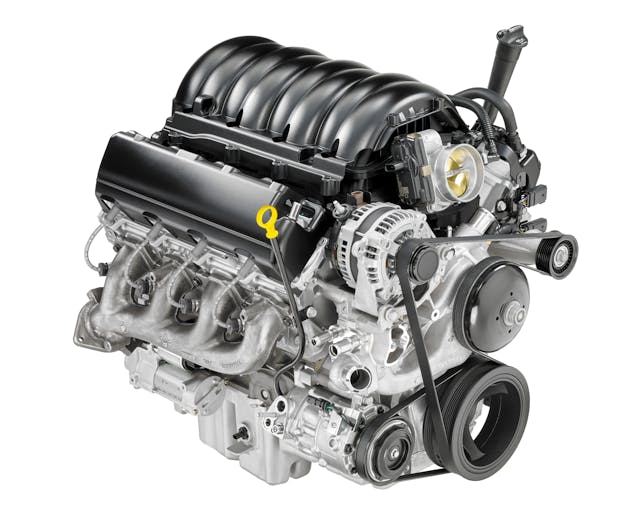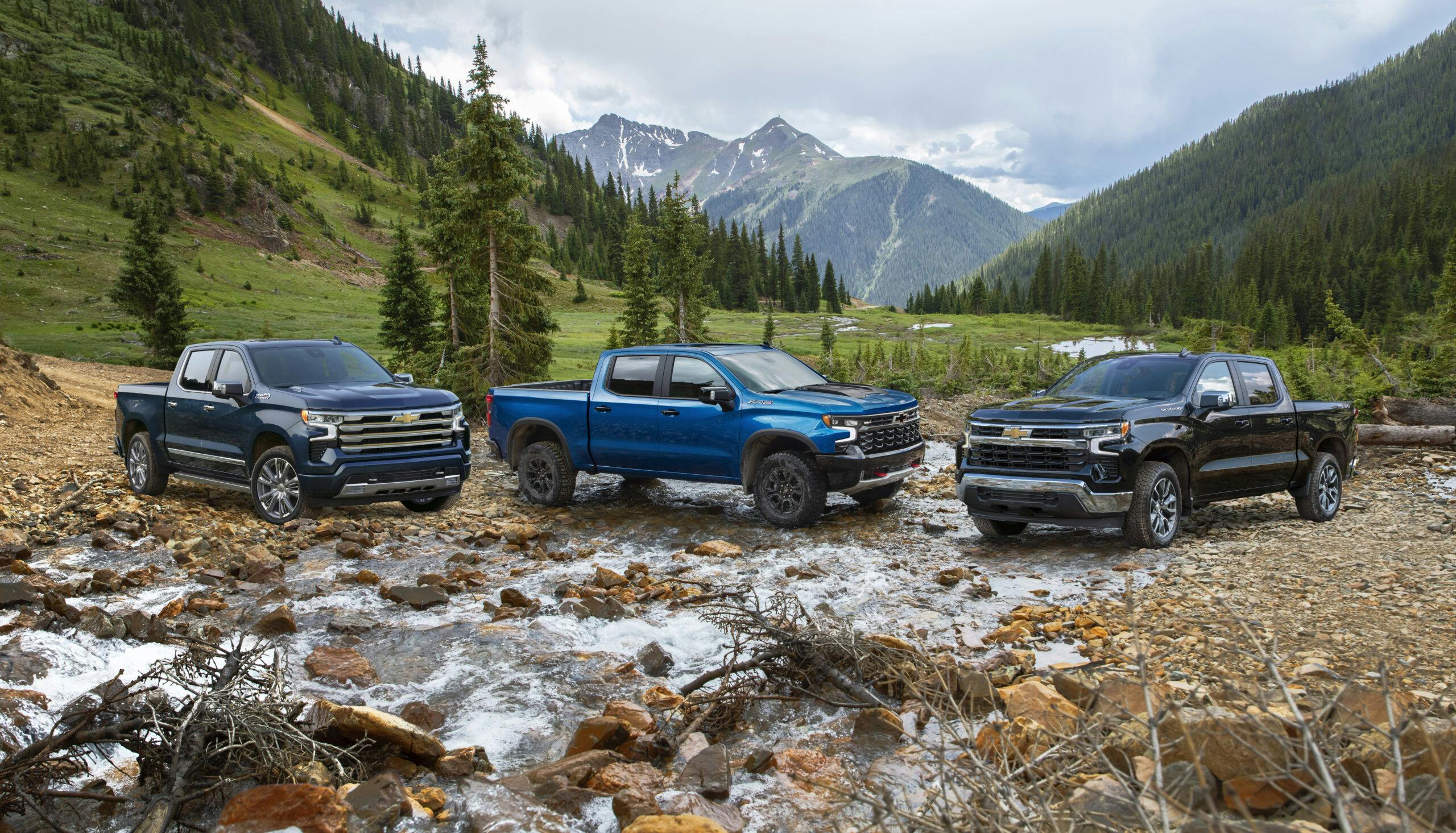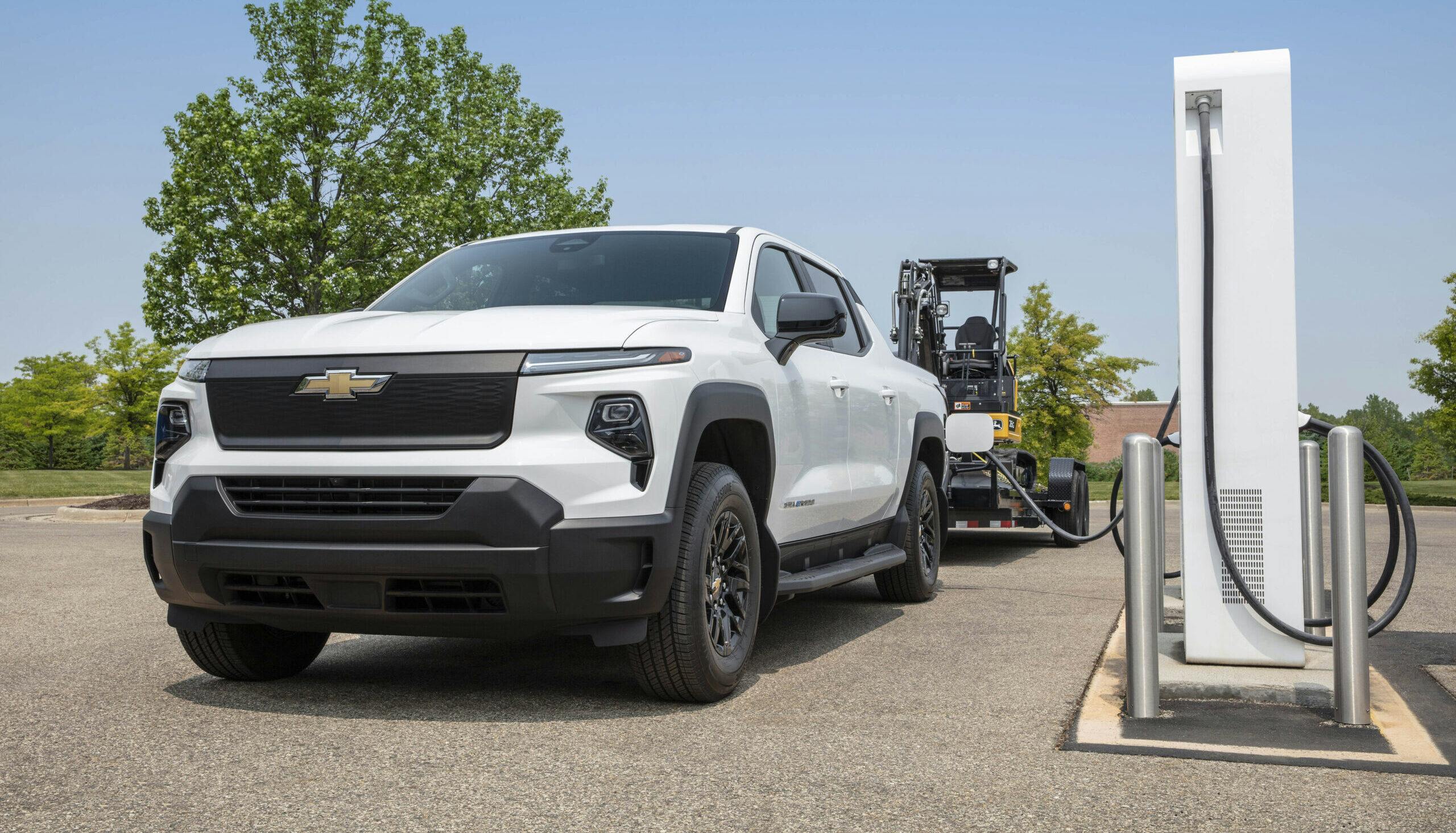GM’s new V-8 workhorses are vital to the EV transformation
This article first appeared in Hagerty Drivers Club magazine. Click here to subscribe and join the club.
You probably know the cautionary tale of Eastman Kodak, the photography giant that failed to embrace the transformation to digital and thus declined into bankruptcy. You might not be aware that the tale is mostly untrue.
“In fact, Kodak invested billions to develop a range of digital cameras,” recounted a 2016 article in Harvard Business Review, which noted that Kodak also bought an online photosharing platform “before Mark Zuckerberg wrote a line of Facebook’s code.” An argument can even be made that Kodak overinvested in digital—a new field it scarcely understood—rather than try harder to sustain the highly profitable photo chemistry business it had spent a century perfecting. Perhaps the lesson is simply that it’s impossible to predict the future, no matter how much you spend trying.

That lens, properly focused, is useful for examining General Motors’ announcement earlier this year that it will invest nearly $1 billion to retool several factories for a new generation of small-block V-8 engines. The announcement, which contained no details about the engines themselves or their timing, was immediately distilled into politically charged narratives. For those in the Who Killed the Electric Car? corner, it was evidence that nefarious Detroit intends to do business as usual. For those at the other extreme, it has been greeted as tacit admission from “Government Motors” that the top-down push toward electrification is doomed to fail with real consumers.
Certainly, there’s wiggle room in GM’s oft-repeated climate pledge, that it “aspires to eliminate tailpipe emissions from new light-duty vehicles by 2035.” Aspiring doesn’t necessarily mean achieving, and the transition away from internal-combustion vehicles will be an extremely complicated issue for established car companies.
There are technical reasons to keep the V-8s fresh. In the short term, it’s towing. The electric Chevrolet Silverado EV can pull an impressive 10,000 pounds, but that eats into its advertised 400-mile range. Those who regularly tow long distances—everyone from your landscaper to retirees pulling Airstreams—will be buying fuel-burning trucks until battery technology and charging infrastructure greatly improve.

An investment in V-8s is also a hedge against uncertainty about the long term. The next decade will likely belong to EVs, but beyond that, who knows? “In the distant future, you might find things like hydrogen becoming available and fueling an internal-combustion engine,” said K. Venkatesh Prasad, senior vice president of research and chief innovation officer at the Center for Automotive Research.
The biggest reason to update a V-8, though, is a counterintuitive one: GM needs V-8s in order to build EVs. Battery electric vehicles accounted for only 5.6 percent of new vehicles sold in the United States last year. Developing EVs that will appeal to the remaining 94.4 percent will require massive investment. GM says it’s spending $10 billion a year on capital investments, “the majority focused on our EV portfolio.”
Electric vehicle startups have turned to the markets to raise the necessary R&D money, as have some established automakers—VW took its Porsche subsidiary public last year, raking in $72 billion. However, the Wall Street route has been largely a dead end for Detroit; Tesla, even after a bruising year for its stock, still has a market capitalization some 15 times that of GM. “Tesla gets lots of cash coming from investors. As an incumbent, you don’t have that,” said Prasad. “So, you create that cash flow using the goose that lays the golden eggs.”

The goose for GM is full-size trucks. Chevrolet, Cadillac, and GMC collectively sold more than a million of them in the United States in 2022. Some 60 percent of those were equipped with small-block V-8s, an engine family GM has perfected over the course of seven decades, five generations, and more than 100 million units. The relatively small investment in a sixth generation is a gambit to keep the goose fed. The Catch-22—the same kind that ultimately bankrupted Kodak—is that eventual success for the EVs will come at the expense of those V-8 trucks. “That goose is going to get smaller and smaller,” predicted Prasad.
In the meantime, there’s a delicious and instructive irony in the fact that buyers of V-8 trucks and buyers of EVs will, for the foreseeable future, need each other. Maybe we can get along, after all. Let’s also not ignore the obvious good news for enthusiasts: One of the greatest engines ever will live to rumble for another day. Mama isn’t taking our Kodachrome away just yet.
***
Check out the Hagerty Media homepage so you don’t miss a single story, or better yet, bookmark it. To get our best stories delivered right to your inbox, subscribe to our newsletters.





I must say, this is the most spirited conversation I’ve seen in quite a while. Encourage your friends to buy EVs, please. That will make the playing field for us ICE or H2-ICE folks way more open. Excelsior!
So glad to see the comments on Kodak and the enormous digital work they did. They had in fact most of the digital patents. Sadly they didn’t have the drive to make other companies pay for using their patents. I watched as the Kodak lawyers were limited in suing for patent infringement and fees. Would have made a big difference. I am interested in how this writer knew what I have known for decades.
I see a time in the future where there are huge parking lots like those at truck stops, where in the summer months, hundreds of pick up trucks with travel trailers and RV’s are all parking overnight to charge while others sit waiting for a slot. It’s actually a pretty hilarious notion that people will accept doubling the length of the trip while sitting in the middle of the desert charging batteries while using an electric AC system to cool themselves. Are there going to be some series of roadside charge up/sleep in diners? 🤣 or are there going to be trucks that will run 500 miles on a charge while pulling a trailer? Destination? Wilderness campsite with no electricity. Crank up your gas generator dad. You’re going to need to get back to civilization somehow.
I’ve been hit by the whole, “oh, you’re a horse and buggy guy at the beginning of the automotive age. Erm no. ICE Automobiles have always had one thing going for them. The fuel is created by competitive private enterprise. Enjoy your future car or truck that is fueled by utility companies that are few in number, hold a monopoly on the resource you need, are highly government controlled and regulated, and could shut off at any time without notice or reason. Let’s not forget about rolling blackouts, shall we? It’s a stuuuuupid road we are going down that ultimately leaves us at the mercy of the mismanaged US govt and a few extremely powerful entities that will eventually decide who can drive and how much. What about wind and solar? There are thousands of windmills in Washington State. Are you seeing a break on your price per kilowatt hour? Home solar? Talked to anyone on your block that made the switch? What? There’s no one on your block that switched and is selling power back to the utility company? I see. Huh. You’d think if it were cost effective, everyone would be doing it.
The key to acceptance of EV is to one get them fully developed and then make them do the public will atop them naturally
This whole deal that the earth will die in 12 years only works on the ignorant.
The Government is really forcing other things that have made a mess. Take walkable cities.
They have taken the town near us and cut 4 lanes to two lanes. Added bike lanes no one ever uses. If you did you would be robbed since they no longer prosecute crime.
The Round abouts have had mixed results. In the small town near by they have 4 in a row in 1 mile. Not two are the same. People have no idea how to use them. They yield to a stop when they have the right away.
Also the one is designed to make the one lane to cut you off if you are in the right lane to enter one road. There is no way you can’t cut someone off.
One had to be re designed as semi trucks were over the curbs.
All of this goes back to the Green agenda.
The RPM act is fighting the EPA that is wanting yo make it a crime to modify a new car for race only and off road. Yes if you want to race a Mustang you will have to keep all the emissions in place.
In time they will either increase the tax on your collector cars or they will ban the gas you need and add more alcohol to where it will eat up your tank and lines.
When we vote we need to be aware of who they support in this deal. You have a number of people that get driven around in a Suburban that want to deny you that same right.
We are not Europe. We live miles from where we travel. If I had an EV it is fine around town but where we go there are no chargers and it would take two days to charge the car yo get home.
The real problem is the average person is clueless on this. Worse yet many enthusiast don’t have the full story or correct story.
EV is not evil. But it also is not ready yo replace ice and may be a decade or two from replacing it. We can coexist with both and continue to develop EV at an affordable rate.
By the way let’s get one thing straight. Kodak and nearly every other camera company failed or is failing due to Apple and Samsung phones.
Most phones take professional level photos at a level my old Nikon never could.
Only the high level specialize cameras are in much demand. The rest of us are just using our phones.
Same applies to video cameras. I can take 4K all day with my phone so my video camera tot’s in the closet.
What killed Kodak is they only made cameras not phones.
Kodak filed for bankruptcy in 2012, when camera phones were not nearly as capable as they are now – or as capable as the better cameras were back then. From what I have read, “computational photography” is what phone cameras most benefit from; it certainly is not their sensor size or sophistication (some of the latest iPhone models notwithstanding). This “computational photography” technology could be utilized in cameras, but would likely make the cameras too expensive to compete any better than they do now.
In other words, phone cameras did not help Kodak, but they were very likely NOT the main problem leading to the 2012 bankruptcy.
If the choice is to buy a V8 truck or an EV anything, I’ll go V8 truck. Personally I want a car not a truck.
The stats show EVs have an edge over ICEs on the carbon footprint front, if one can believe anything in a post-truth world, and if ALL the factors are included – ( those weighty vehicles wear tires and roads at a higher rate). Whatever the real difference is, the hoopla seems excessive and EVs have their place but are not an end-all solution.
In the olden days, I got around in a lightweight 2-seater that got 40+ mpg and again in a small sedan that was mechanically fuel-injected, safer, had more comfort, and more power but still got 40+ mpg.
One would think 50 or so years on that ICE development would yield clean-burning, highly efficient units at least to a level that could meet the mandates.
Ian, you are 100% correct. “The inmates are now running the asylum. The climate nazis have taken over the agenda.” We don’t need to change cars, we need to change government!
Hydrogen is not energy efficient to produce with current technologies. The first technology (the most common and cheapest) combines natural gas and superheated steam to generate hydrogen but also gives off a lot of CO2. The second, electrolysis, uses electrical current to separate hydrogen atoms from water. In theory (100% efficient) the electrolysis process can produce 1 kg of hydrogen using 39 KW/HRS of electricity. With current technology the commercial efficiency is more like 75 – 80% which calculates to around 50 KW/HRS.
The 1 KG of Hydrogen has the energy to propel a “typical” vehicle around 75 miles so we are using 50 KW/HRS of electricity to move that vehicle the 75 miles. A “typical” EV vehicle can travel around 3 miles per KW/HR of electricity and so could travel around 150 miles on the same amount of electricity.
I realize that there are many additional factors involved in this but it illustrates the limitations of using hydrogen with current technologies.
Aren’t those in-line sixes in the lead photo?
LOL! That’s the first thing I noticed too. A story about V8’s and the lead photo is of inline 6’s.
EV’s are NOT the future that’s what the left wants you to think but the reality is that fuel cells are the true future, EV’s still need coal to charge them. I never have bought an import & will NEVER buy an EV car.
On the workers strike the fact they want a shorter work is utter BS! It seems that the younger generations just want to sit on their tails & get a check. Go on welfare if you want a short week! It seems there is NO work ethic anymore.
OMG. Some people are brainwashed by the fake news and the crooked administration. When they say go GREEN it’s because that’s what they are making off of this. Our government is selling us out and setting us up for failure by trying to force all electric. Now they want your gas ovens too. If we go all electric for everything we are doomed for failure and set up for a sure bet terrorist attack on our grid that would cripple our country and make some politicians happy. Remember the old adage “Don’t put all of your eggs in one basket “. That’s what we are being forced to do. We need a choice if we want. (Tim and others who think we should all think like them) are out of touch. We are creating more pollution by going all electric plain and simple. If you want electric then buy it and leave the rest of us alone. I don’t need to drink your Kool Aid.
Ponder this also. How about the elite that are flying private planes across the country everyday just to have dinner and come back or other stupid reasons just because they can or flying into space for fun. Can we calculate that carbon footprint? Let’s make them go all electric with their planes first and see what happens 😂😂😂
I got through the first paged of comments without seeing any mention of solar. Once we put solar in our home, we will buy a back-up battery and an EV.
Yes, there are problems with mining and recycling minerals for batteries. But most of the comments here seem to deny the fact that fossil fuels are rapidly becoming a scarce resource. A Shell Oil geophysicist (Hubbert) knew in the 1950’s that it would become increasing difficult to find new oil and extract existing oil starting in 1970. Oil companies are learning how to extract oil (fracking) that is getting increasing hard to suck out of the earth, but oil is not a forever solution.
Oil is still cheap and easy. But uses for petrochemicals, like in plastics, extend beyond energy. We need to conserve oil so we can use oil for future transportation and consumer products. So, why wouldn’t we look to other resources, like nuclear, solar, and wind for electricity for electric commuter cars and households and preserve oil production for what will be a long-term need for fossil fuels? Every barrel of crude we save now is a barrel we can use later.
This is certainly being driven by market forces as well as governmental ones. An electric car will absolutely be useful to most Americans. I, however, will still need gas for my Chevy truck, Lotus Evora S, RV, and my wife’s ski boat. I don’t see the problem of doing both. To thoughtlessly reject EVs because we think it’s being forced upon us is a pretty shaky argument.
Long live the V8 (especially the 6.0 in my 2002 Silverado 2500HD) and the EV.
ICE engines perfected? Really? One billion $ sounds like a lot of money but that is only a drop in the bucket compared to what has been invested in EV’s. Think how much better and cleaner ICE motors could still get if the R&D investment was even close to what is being spent on EV’s.